Discover Engaging Water Science Experiments for Elementary Students
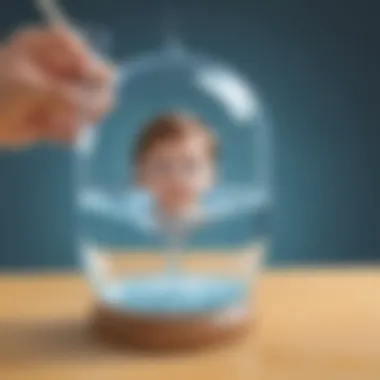
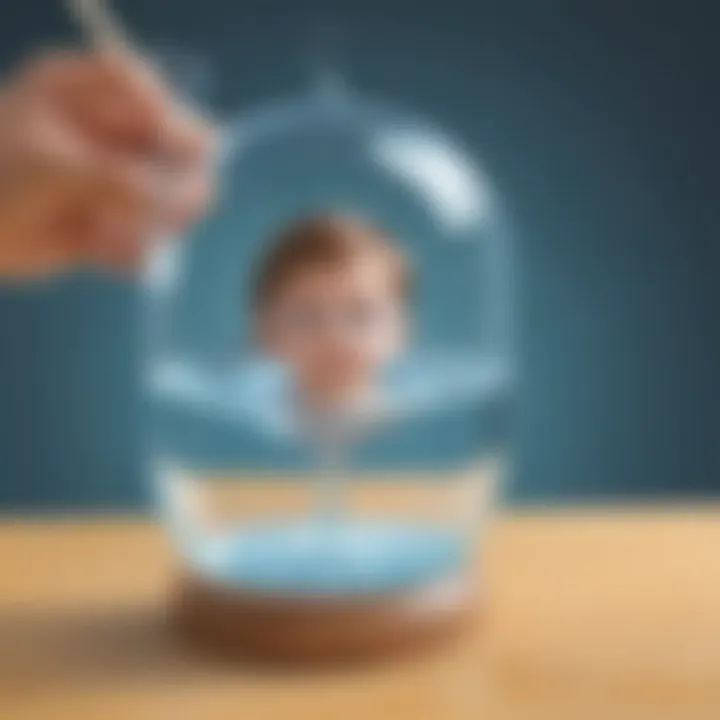
Creative Activities
Water science experiments offer a fantastic opportunity for elementary students to engage with hands-on learning. Through a series of captivating experiments, young learners can explore the wonders of water while developing essential scientific skills. In this section, we will delve into creative craft ideas that children can easily replicate, providing detailed step-by-step guides for each activity. Additionally, we will discuss the educational value of these experiments and how they contribute to the overall learning experience.
One of the most exciting aspects of water science experiments is the opportunity for children to get creative with craft ideas. From building miniature water cycles to creating floating boats, these activities not only enhance children's artistic abilities but also deepen their understanding of scientific concepts in a fun and interactive manner. Through carefully curated craft ideas, children can explore the various properties of water and its importance in our daily lives.
To ensure a smooth implementation of these activities, we will provide comprehensive step-by-step guides for each experiment. Clear instructions will be laid out, detailing the materials needed, the procedure to follow, and the expected outcomes. By breaking down each experiment into manageable steps, we aim to make the learning process accessible and enjoyable for young learners, encouraging them to delve deeper into the world of water science.
Beyond the entertainment value, these water science experiments hold significant educational benefits for elementary students. By actively participating in hands-on activities, children can improve their critical thinking skills, enhance their problem-solving abilities, and develop a deeper appreciation for the scientific method. Through experiential learning, students can grasp complex scientific concepts in a tangible way, fostering a lifelong love for learning and exploration.
Fun Quizzes
In addition to engaging in hands-on experiments, elementary students can further solidify their knowledge of water science through fun quizzes. These interactive quizzes cover a range of fascinating topics related to water, offering an enjoyable way for children to test their understanding and reinforce key concepts. In this section, we will explore the various quiz topics available on ElemFun, the types of questions used, and how these quizzes aid in knowledge reinforcement.
Quiz topics offered on ElemFun span a diverse array of water-related subjects, including the water cycle, properties of water, aquatic life, and environmental conservation. By engaging with these quizzes, students can deepen their understanding of these topics in a gamified setting, making learning both entertaining and effective. Through exposure to different quiz topics, children can broaden their knowledge base and develop a holistic understanding of water science.
The quizzes featured on ElemFun utilize various question types to keep children engaged and challenged. From multiple-choice questions to fill-in-the-blanks and true or false prompts, these quizzes cater to different learning styles and encourage active participation. By incorporating a mix of question types, ElemFun aims to enhance learning outcomes and provide an engaging platform for students to hone their critical thinking skills.
Apart from testing knowledge, these quizzes play a crucial role in reinforcing learning. By prompting students to recall information, apply concepts, and make connections between different ideas, quizzes help solidify the key takeaways from water science experiments. Through repeated exposure to the quiz content, students can internalize important concepts, boost their retention rates, and gain confidence in their understanding of water science.
Fact-Based Articles
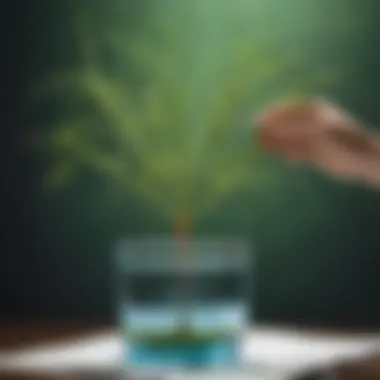

In addition to engaging activities and quizzes, elementary students can expand their knowledge of water science through fact-based articles. These articles cover a wide range of topics, presenting information in an engaging and easy-to-understand manner. In this section, we will highlight the diverse topics covered in these articles, how they convey information effectively, and provide additional resources for further exploration.
The fact-based articles on water science delve into various aspects of this fascinating subject, including water pollution, the importance of conservation, climate change's impact on water sources, and innovative water-saving technologies. Through detailed analyses and informative content, these articles offer valuable insights into the intricate world of water science, inspiring curiosity and stimulating further exploration.
Engaging content is at the core of these fact-based articles, with a focus on delivering information in a clear, concise, and engaging manner. By employing accessible language, vivid examples, and interactive elements, these articles make complex scientific concepts relatable and easy to understand for elementary students. Through a combination of informative text and visual aids, children can grasp abstract ideas more effectively and develop a deeper appreciation for the wonders of water.
To encourage continued learning and exploration, we will also provide links to additional resources that complement the articles. These resources may include further reading materials, interactive websites, educational videos, and hands-on activities that align with the topics covered in the articles. By offering a curated list of supplementary resources, we aim to inspire students to delve deeper into the realm of water science and cultivate a lifelong passion for scientific inquiry.
Introduction
Water science experiments for elementary students play a crucial role in fostering young minds' interest in science and nature. These experiments not only provide hands-on learning opportunities but also help in building a strong foundation for scientific thinking at an early age. By engaging in water-based experiments, students can develop critical skills such as observation, hypothesis testing, and problem-solving. Furthermore, understanding the properties and behaviors of water through simple yet intriguing experiments can spark curiosity and inspire a lifelong love for exploration and learning.
Significance of Water Science Experiments
In the realm of education, water science experiments hold a significant position as they offer a unique avenue for children to interact with science in a tangible and exciting manner. By engaging in activities that involve water, students can grasp fundamental scientific concepts such as density, adhesion, cohesion, and the water cycle in a hands-on way. These experiments also help in making abstract ideas more concrete, allowing students to see scientific principles in action rather than just reading about them in textbooks. Through these immersive experiences, young learners can cultivate a deeper understanding of the world around them and develop a sense of wonder and curiosity towards the complexities of nature, thus laying the groundwork for future academic success and a lifelong passion for scientific exploration.
Basic Water Properties Experiments
Water, the essence of life, holds a myriad of intriguing properties that captivate young minds. In this section, we delve into the fundamental aspects of water's behavior and characteristics, laying the groundwork for a deeper understanding of scientific principles. Understanding basic water properties is crucial as it forms the basis for more complex experiments, paving the way for a comprehensive exploration of the wonders of water in our everyday lives.
Surface Tension Exploration
Creating a Floating Paper Clip


Exploring surface tension through the creation of a floating paper clip offers a hands-on experience that vividly demonstrates this property of water. The delicate balance between cohesion and adhesion that enables the paper clip to rest effortlessly on the water's surface mesmerizes young learners. Not only does this experiment showcase the remarkable surface tension of water, but it also fosters curiosity and critical thinking among students, encouraging them to ponder the science behind this phenomenon. Despite its simplicity, creating a floating paper clip serves as a foundational experiment in understanding the cohesive forces at play in water, sparking an interest in exploring further properties and applications.
Observing Water Droplets on a Coin
Examining water droplets on a coin provides a closer look at how water molecules adhere to surfaces, showcasing the concept of surface tension in action. By observing the behavior of water droplets on a coin, students gain insight into the cohesive properties of water and how it interacts with different materials. This experiment not only illuminates the concept of surface tension but also instills a sense of wonder and curiosity in young minds. The ability of water droplets to form round, distinct shapes on the coin's surface offers a tangible illustration of surface tension at work, sparking a sense of fascination and inquiry among budding scientists.
Density Experiment
Layering Liquids of Different Densities
Exploring density through the layering of liquids of varying densities is a captivating experiment that allows students to witness the concept of buoyancy and mass in action. By carefully layering liquids with different densities, such as oil and water, young learners observe firsthand how substances with varying mass interact and arrange themselves based on their density. This experiment not only elucidates the concept of density but also introduces students to the idea of relative buoyancy and mass displacement. Through this hands-on activity, students develop a deeper understanding of how density influences the behavior of liquids, laying a solid foundation for further exploration into the physical properties of substances.
Adhesion and Cohesion Demonstrations
Water Bridge Formation
The formation of a water bridge showcases the adhesive and cohesive properties of water in a visually captivating manner that sparks curiosity and inquiry. By carefully manipulating water to create a bridge between two surfaces, students witness the cohesive forces that allow water molecules to cling together, as well as the adhesive forces that bind water to other materials. This experiment not only highlights the unique properties of water but also encourages students to explore the concepts of adhesion and cohesion in a hands-on, engaging way. The intricate balance between these two forces becomes apparent as students observe the formation of a water bridge, promoting a deeper appreciation for the molecular interactions that govern water's behavior.
Water Cycle Simulations
In the realm of educational explorations for elementary students, Water Cycle Simulations stand as a pivotal component. These simulations provide an interactive and hands-on approach to unraveling the intricate workings of the water cycle, a fundamental process in nature. By engaging in Water Cycle Simulations, young minds are not only introduced to scientific concepts but are also encouraged to observe natural phenomena closely. Understanding the water cycle is essential for comprehending environmental processes and appreciating the significance of water conservation. Through these simulations, students can grasp the transformative journey of water from evaporation to condensation and precipitation, fostering a holistic view of Earth's hydrological cycle.
Evaporation and Condensation Models
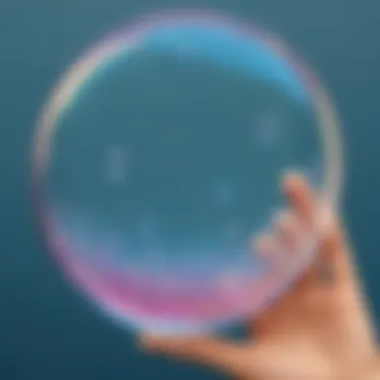
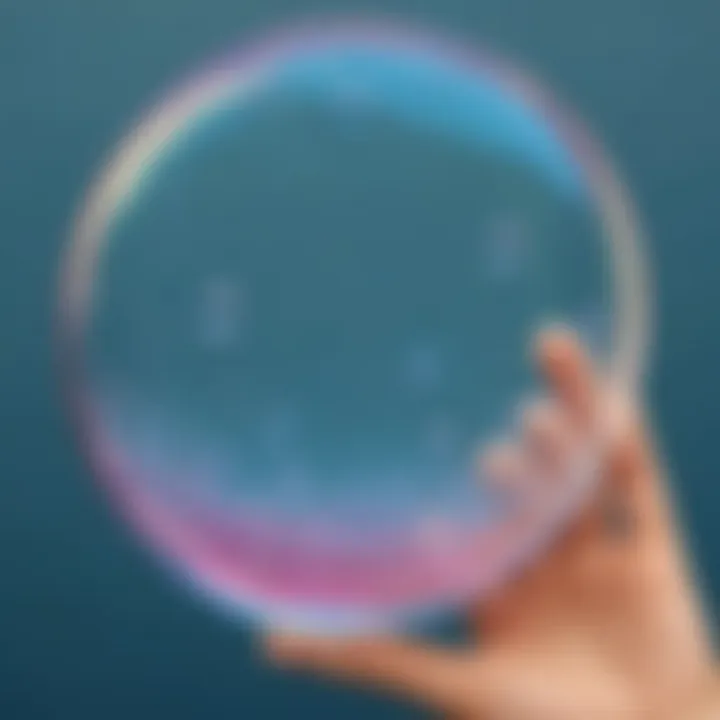
DIY Water Cycle in a Bag
The DIY Water Cycle in a Bag experiment serves as a captivating method to illustrate the concepts of evaporation and condensation. By replicating the natural processes of water cycle within a confined space, students can observe firsthand how water transforms from liquid to gas and back to liquid. This hands-on activity enables children to witness the role of heat energy in evaporation and the formation of water droplets through condensation. Furthermore, the DIY Water Cycle in a Bag facilitates a visual representation of clouds, rain, and the continuous movement of water in the environment. Its simplicity and effectiveness make it an ideal choice for educators looking to demystify the water cycle in a way that resonates with young learners. Despite its simplicity, this experiment offers a profound insight into the cyclical nature of water on Earth, sparking curiosity and promoting scientific inquiry.
Cloud Formation Experiment
Building a Cloud in a Jar
The Cloud Formation Experiment, particularly Building a Cloud in a Jar, serves as a remarkable demonstration of atmospheric phenomena. This experiment allows students to witness the condensation process that leads to cloud formation in the sky. By creating a miniature cloud inside a jar, children can observe the saturation of water vapor and the subsequent clustering of water droplets. Building a Cloud in a Jar not only elucidates the principles of condensation but also provides a tangible experience of how clouds function in nature. This experiment's hands-on nature enhances learning retention and encourages students to explore the interplay between temperature, moisture, and air pressure in cloud development. Building a Cloud in a Jar stands out as an engaging and insightful activity that connects theoretical knowledge with observable results, making the concept of cloud formation accessible and fascinating for young minds.
Environmental Impact Experiments
In the realm of science education, the focus on environmental impact experiments holds particular importance due to its direct relevance to real-world issues. By introducing elementary students to pollution detection methodologies and oil spill cleanup challenges, educators pave the way for a generation that is not only aware of environmental concerns but also equipped to address them. These experiments offer an opportunity for young learners to understand the delicate balance of ecosystems and the potential consequences of human actions on the environment. Exploring environmental impact experiments not only enhances scientific knowledge but also instills values of responsibility and stewardship towards the planet.
Pollution Detection Methodologies
Within the domain of pollution detection methodologies, a key facet is 'Testing Water Purity with Indicators.' This methodology is crucial for assessing the quality of water sources and identifying potential contaminants. By utilizing various indicators, students can observe the subtle changes in water properties that indicate contamination. The significance of this experiment lies in its practical application, preparing children to identify pollutants in their surroundings and take measures to address them. 'Testing Water Purity with Indicators' serves as a fundamental tool in environmental monitoring, allowing young minds to grasp the importance of water purity and preservation.
Oil Spill Cleanup Challenge
Transitioning to the oil spill cleanup challenge, an essential component is the 'Absorption Techniques Exploration.' This exploration focuses on strategies to mitigate the harmful effects of oil spills on aquatic environments. By studying different absorption techniques, students learn how to contain and remove oil from water effectively. The practicality of this experiment lies in its hands-on approach, enabling children to simulate real-life scenarios and understand the significance of rapid response in environmental disasters. 'Absorption Techniques Exploration' equips young learners with problem-solving skills while reinforcing the critical role of environmental conservation in safeguarding natural habitats.
Conclusion
Because it's crucial to grasp the significance of each scientific experiment, the Conclusion section serves as a vital component that ties together the entire educational journey that elementary school children have embarked upon through this article. Understanding the results and implications of the experiments leads young minds towards a structured comprehension of the scientific concepts presented. By comprehensively summarizing the key takeaways, benefits, and crucial considerations, the Conclusion section acts as a reflective point for both students and educators. It is imperative to instill in children the value of deductive reasoning and the ability to infer from observations, laying the groundwork for a lifelong curiosity towards science.
Encouraging Scientific Curiosity
Enhancing scientific curiosity among young learners is a fundamental aspect of the educational process, suggesting engaging methods and resources to foster a deep interest in the world of science for elementary students. Through immersive and stimulating experiments and activities, students can explore the realms of scientific inquiry with enthusiasm and rigour. Encouraging scientific curiosity at an early age not only nurtures a passion for learning but also instils critical thinking skills essential for problem-solving and analysis. By providing hands-on experiences and elucidating intricate scientific phenomena in a simplified manner, young minds are encouraged to question, experiment, and discover, cultivating a sense of wonder and exploration that is pivotal for further academic growth and cognitive development.







